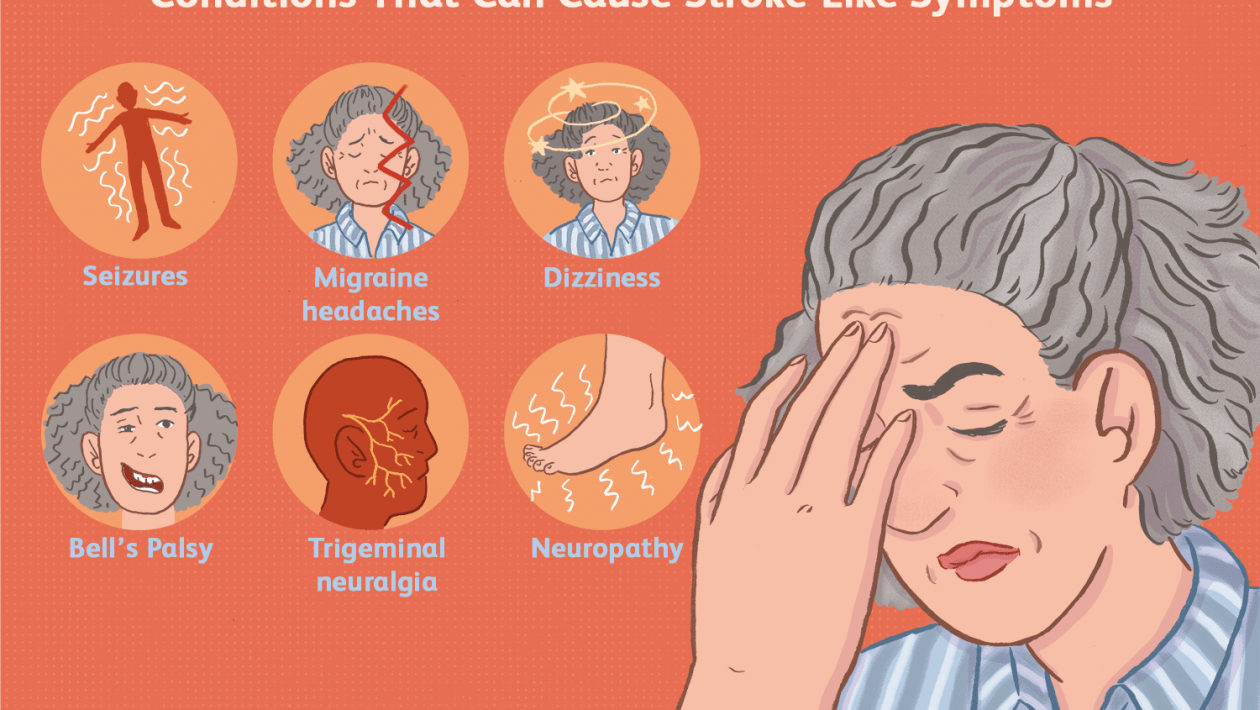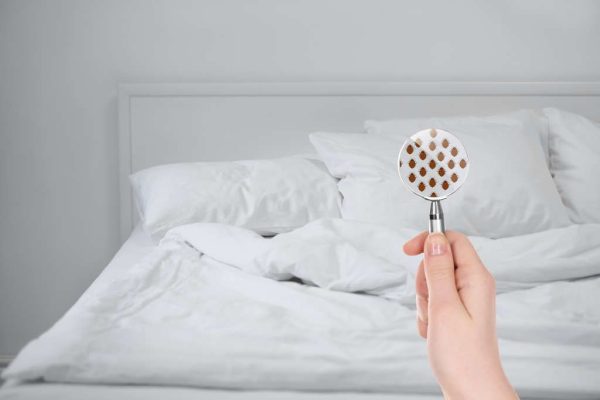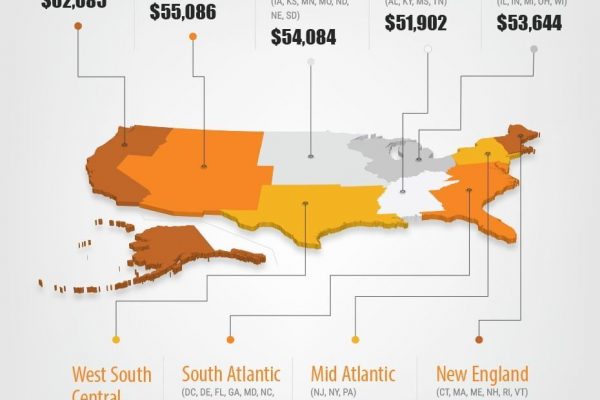When the brain's blood supply is causes a stroke or reduced, a stroke occurs, making the brain tissue unable to obtain oxygen and supplements. The synapse begins to transmit within a few minutes.
Stroke is a health-related crisis, so emergency treatment is urgent. The early activity can reduce psychological damage and various entanglements.
https://www.youtube.com/watch?v=kqz19eH6vto
Fortunately, fewer Americans now have strokes than before. Effective drugs can also help prevent strokes.
Table of Contents
Indications of causes a stroke
If you or someone with you may have had a stroke, please consider when these manifestations started. Specific alternative therapies are best given shortly after the stroke begins.
Signs and causes a stroke include:
Inconvenient to talk and understand what others are saying. You may experience confusion, slurred speech, or speech problems.
Loss of movement of the face, arms, or legs or death. You may cause unexpected death, defects, or insufficient activity on your face, arms, or legs. This often affects only one side of the body. Try to raise both hands at the same time. In case one arm starts to fall, you may be having a stroke. Also, when trying to grin, one side of the mouth may hang down.
Find the problem in one or both eyes. You may be unexpectedly blurred or darkened in one or both eyes or what you see.
Brainache. Sudden, severe brain pain, which may be caused by gushing, nose tip, or cognitive changes, may indicate that you are having a stroke.
Inconvenient to stroll. You may stagger or lose balance. You may also be unexpectedly dull or lack coordination.
When to see an expert
If you find any signs or manifestations of a stroke, whether it goes back and forth or disappears altogether, you should seek assured clinical considerations. Think "fast" and do the corresponding things:
face. Ask for an individual grin. Is one side of the face hanging?
Arms. Ask the individual to raise his arms. Will one arm float down? Or will you say that someone is unable to stand up again?
Discourse. Ask the individual to repeat a primary expression. Are their words vague or weird?
Time. If you notice any of these signs, please call 911 or seek emergency medical help immediately.
Call 911 or a crisis number near you immediately. Try not to step back and check if the instructions stop—consistent check. The longer the stroke is left untreated, the more likely it is to cause brain damage and incompetence.
If you are with someone who suspects a stroke, please be cautious about the patient while sitting to seek crisis help.
the reason of causes a stroke
There are two primary drivers of stroke: venous obstruction (ischemic stroke) or venous overflow or burst (hemorrhagic stroke). A small number of people may temporarily interrupt the blood flow in their heads, called a transient ischemic attack (TIA), which does not cause lasting side effects.
Ischemic stroke
This is the most widely recognized stroke. This happens when the brain's veins become restricted or blocked, causing a severe decrease in blood flow (ischemia). Blocked or restricted veins are caused by greasy storage that forms in the veins or by the movement of blood clumps or other trash through the blood vessels in your circulatory system and brain.
Some potential studies indicate that COVID-19 contamination may be a possible cause of ischemic stroke, but more tests are needed.
Hemorrhagic stroke
When your veins rupture or rupture, a hemorrhagic stroke can occur. Mental bleeding may be caused by various diseases that affect your veins. Components identified as hemorrhagic stroke include:
Uncontrolled high blood pressure
Excessive use of blood thinners (anticoagulants)
Mass (aneurysm) in the shaking area of the venous separator
Damage (for example, automatic collision)
Protein is stored in the venous compartment, causing defects in the vascular box (cerebral amyloid angiopathy)
Ischemic stroke prompt discharge
A less common cause of leakage in mind is the rupture of abnormal knots in mural veins (arteriovenous distortion).
Transient ischemic attack (TIA)
A transient ischemic attack (TIA)-sometimes called a stroke-is a short-lived side effect, just like you would in a stroke. TIA will not cause permanent damage. They are caused by a temporary decrease in blood supply to parts of the brain and may last only five minutes.
Like an ischemic stroke, TIA occurs when blood clotting or garbage is reduced, or blood flows to a part of the sensory system.
Regardless of whether you have considered TIA on the grounds of indication improvement, you should seek crisis care. It is unrealistic to have a stroke or TIA based on one's side effects. If you have ever had a TIA, it means you may have blocked or restricted your veins to a large extent, which suggests your thoughts. Performing a TIA increases the risk of stroke in the future.
Risk factors
A large number of elements may increase the risk of stroke. Risk factors for stroke that may be treated include:
Lifestyle hazards
Overweight or obese
Actual sleep
Heavy or heavy drinking
Use of illegal drugs, such as cocaine and methamphetamine
Clinical risk factors
hypertension
Smoking or second-hand smoke
Elevated cholesterol
diabetes
Obstructive resting apnea
Cardiovascular disease, including cardiovascular failure, heart desert, heart disease, or abnormal heart music, such as atrial fibrillation
Personal or family background of stroke, respiratory failure, or transient ischemic attack
Coronavirus pollution
Different variables associated with a higher risk of stroke include:
Age-55 years or older experienced people have a higher risk of stroke than younger people.
Race-African Americans have a higher risk of stroke than people of different races.
Gender-Men have a higher risk of stroke than women. Ladies are usually more sophisticated when they have a stroke, and they are bound to have a stroke compared to men.
Chemicals-The use of estrogen-containing contraceptives or chemotherapy will amplify the harm.
complex causes a stroke
Stroke can sometimes cause temporary or permanent disability, depending on how long the brain needs blood supply and the affected area. Confusion may include:
Loss of movement or muscle development. You may feel stiffness on one side of your body or unable to grasp specific muscles, such as your face or the side of an arm.
Difficulty speaking or swallowing. A stroke may affect your mouth and throat's muscle control, making it difficult for you to talk frankly, drink or eat. Similarly, you may encounter language problems, including speaking or talking, reading or writing.
Cognitive decline or thinking challenges. Many people with stroke have some cognitive decline. Others may have problems thinking, thinking, making decisions, and getting ideas.
Question of enthusiasm. People who have had a stroke may have difficulty controlling their feelings or may experience depression.
Pain. The body's parts affected by the stroke may experience torture, death, or other irregular sensations. For example, if a stroke causes your left arm to lose feeling, you may develop an embarrassing tremor in that arm.
Changes in behavior and self-care ability. People with stroke may be taken away more often. They may need help with the preparation and daily tasks.
avoid
Being aware of stroke risk factors, following the PCP's recommendations, and enjoying a good lifestyle is the best way to prevent stroke. If you have a stroke or transient ischemic attack (TIA), these measures may help prevent other strokes. There may also be part of the things you consider in the medical clinic.
Many stroke countermeasures systems are equivalent to technologies to prevent coronary heart disease. In summary, reliable lifestyle advice includes:
Control (hypertension). This is likely to be your primary measure to reduce the risk of stroke. In case you have a stroke, lowering the circulatory pressure can help prevent subsequent TIA or stroke. A trustworthy lifestyle and drugs are often used to treat high blood pressure.
Reduce the amount of cholesterol and immersion fat in the diet. Eating less cholesterol and fat, incredibly soaked fat, and trans fat may reduce your course development. If you can't control cholesterol through dietary changes alone, your PCP may recommend lowering cholesterol.
Stop smoking. Smoking brings the stroke risk of second-hand smoke to smokers and non-smokers. Stopping smoking can reduce the risk of stroke.
Monitor diabetes. Diet, exercise, and body shape can help you keep your glucose in a stable range. If lifestyle factors seem insufficient to control your diabetes, your PCP may recommend a diabetes prescription.
Maintain a stable weight.
They were overweight increases other risk factors for stroke, such as high blood pressure, cardiovascular infections, and diabetes.
Eat a diet rich in leafy foods. Eating at least five servings of natural products or vegetables a day can reduce the risk of stroke. A Mediterranean diet that emphasizes olive oil, organic products, nuts, vegetables, and whole grains may be useful.
Practice consistently. From many perspectives, strenuous exercise will reduce the risk of stroke. Exercise can lower the pulse, increase acceptable cholesterol levels, and improve the veins and heart's overall strength. Also, it can make you healthier, control diabetes, and reduce stress. For most of the week (if not the entire time), complete at least 30 minutes of moderate practical work, such as walking, running, swimming, or biking, little by little.
If there is any imagination, keep the liquor in balance. Excessive use of alcohol increases the risk of hypertension, ischemic stroke, and hemorrhagic stroke. Alcohol may also be related to the different drugs you are taking. In any case, seldom or direct drinking, such as drinking a drink a day, may help prevent ischemic stroke and reduce the tendency of blood to thicken. Discuss with your PCP what is right for you.
Treat obstructive resting apnea (OSA). If you have signs of OSA, your primary care doctor may recommend a rest study. This is a rest problem that prevents you from relaxing for a short period during the rest period. OSA Care contains a small tool that communicates positive air route pressure through the lid to keep your air route open when you are resting.
Maintain a strategic distance from illegal drugs. Certain road drugs (such as cocaine and methamphetamine) are risk factors for TIA or stroke.
Preventive drugs causes a stroke
If you have an ischemic stroke or TIA, your PCP may prescribe drugs to help reduce another stroke risk. These include:
Antiplatelet drugs. Platelets are cells in the blood that can form blood clotting. Antiplatelet drugs will make these cells less sticky and less prone to aggregation—the most frequent enemy of platelet drugs as ibuprofen. Your PCP can help you determine the correct portion of ibuprofen.
Your PCP may also consider recommending Aggrenox (a low proportion of ibuprofen and an antiplatelet drug dipyridamole mixture) to reduce the risk of blood clotting. After a TIA or mild stroke, your PCP may give you headache medicine and enemies of platelet medicine, such as clopidogrel (Plavix), to reduce the risk of another stroke. If you cannot take headache medicine, your PCP may recognize clopidogrel alone.
Anticoagulant. These drugs reduce blood thickening. Heparin is effective and may be used clinically.
So, the slower acting warfarin (Coumadin, Jantoven) can be used for a more extended period. Warfarin is a unique blood-lowering drug, so you must take it accurately and observe the effect. Also, it would help if you underwent routine blood tests to screen warfarin items.
For high-risk groups, more recent blood reducing drugs (anticoagulants) can be used to causes a stroke. So, these drugs include dabigatran (Pradaxa), rivaroxaban (Xarelto), apixaban (Eliquis), and edoxaban (Savaysa). So, their behavior is more restricted than warfarin and usually does not require regular blood tests or observation by your primary care doctor. Also, these drugs also have a lower risk of drainage tangles.









